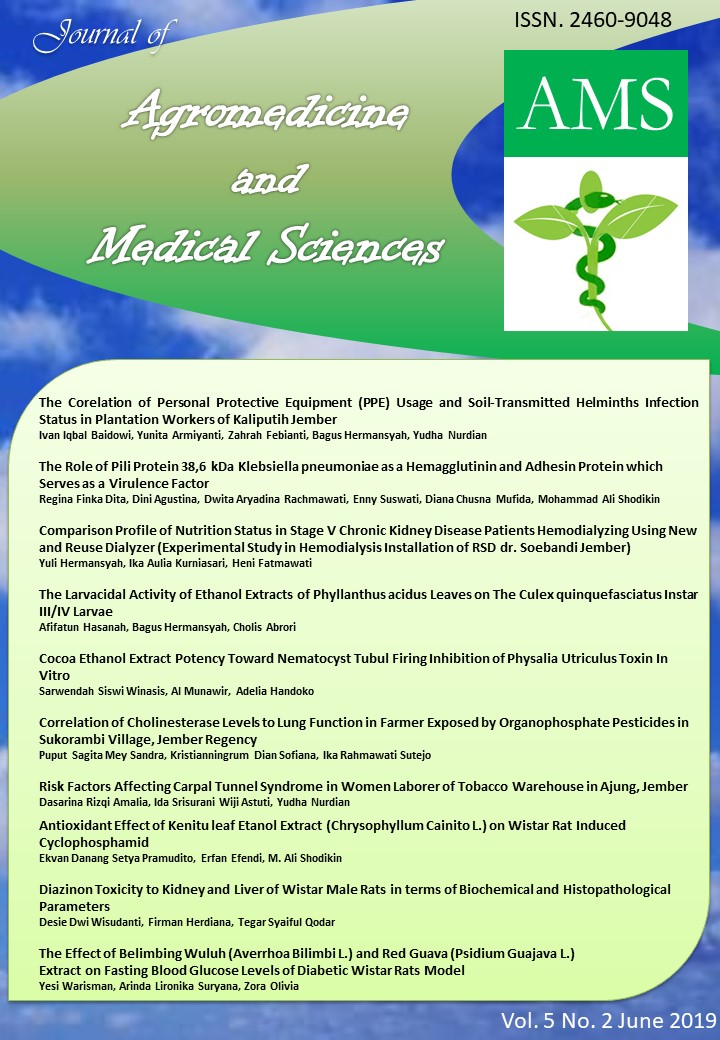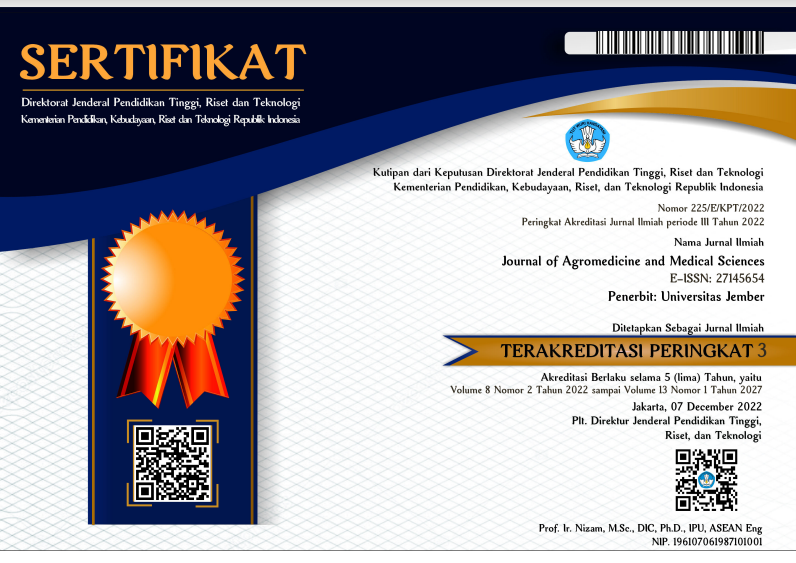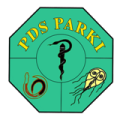Potential of Cocoa Ethanol Extract Toward Nematocyst Tubul Firing Inhibition of Physalia Utriculus Toxin In Vitro
DOI:
https://doi.org/10.19184/ams.v5i2.9623Abstract
There was estimated 150 million envenomation cases due to jellyfish stings occur globally every year. 100 from 10,000 jellyfish species in the world known to be dangerous, one them is Physalia utriculus. The aim of this study was to determine the potential of cocoa (Theobroma cacao L.) ethanol extract toward nematocyst tubul firing inhibition of jellyfish (Physalia utriculus) toxin in vitro. The method was true experimental design with post test only control group design. The study divided into 8 groups: 1 normal control, 1 positive control, 1 negative control, and 5 treatments grups by giving cocoa ethanol extract with concentration 20%, 2%, 0.2%, 0.02%, 0.002%. The observation was made by calculating the percentage number of firing nematocysts. The result showed average percentage of firing nematocyst in the normal control group was 42.50 ± 3.18, positive control group was 37.97 ± 5.57, negative control group was 52.44 ± 2.98, and treatment group which given with cocoa ethanol extract 20%, 2%, 0.2%, 0.02%, 0.002% were 48.24 ± 5.37; 40.62 ± 7.10; 29.45 ± 5.39; 37.60 ± 9.78; 41.11 ± 3.92, respectively. The One Way Annova statistical results test show significance value 0.001 (p≤0.05). The conclusion of this study was the cocoa ethanol extract with concentration 0.2% has most potential to inhibit the jellyfish (P. utriculus) nematocyst tubule firing in vitro.
Keywords: Physalia utriculus, cocoa, toxin, jellyfish























